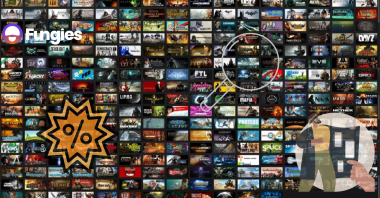In today’s gaming landscape, it’s hard to overlook the footprint of indie games. Yet, have you ever paused to wonder about the remarkable journey of a concept of an indie game? Let’s take a deep dive into this incredible transformation from obscurity to the spotlight.
The Birth of Indie Gaming
In the vast cosmos of the video game industry, there was a time when the term “indie gaming” was barely recognized. It evokes images of the late 1970s and 1980s. Back then, the gaming scene was largely dominated by big-name companies and well-funded studios churning out titles that were assured of their market success.
Defining Moments in the Early Days
In the corners of computer labs, basements, and garages, a distinct movement was taking shape. Here, individual developers or small teams embarked on passion projects, without the constraints of corporate oversight or market pressures.
The tools were rudimentary, the graphics often pixelated, but the soul of the game shone through. These were days when the gaming community was smaller, and word-of-mouth recommendations in school corridors or over bulletin board systems could make a game popular overnight.
Pioneers and Unsung Heroes of the Indie Scene
The indie scene owes much to its early pioneers. Developers who, in the absence of platforms like Steam or itch.io, found innovative ways to distribute their games, be it through floppy disks, local computer clubs, or magazine cover CDs.
While many of these games and their creators might not have found mainstream fame, they laid the groundwork for the indie game explosion that was to follow in the next decades. They showed the world that even without big budgets, flashy graphics, or massive marketing campaigns, a game could touch hearts if it had a strong, compelling core and was made with passion.
What Exactly is Indie Gaming?
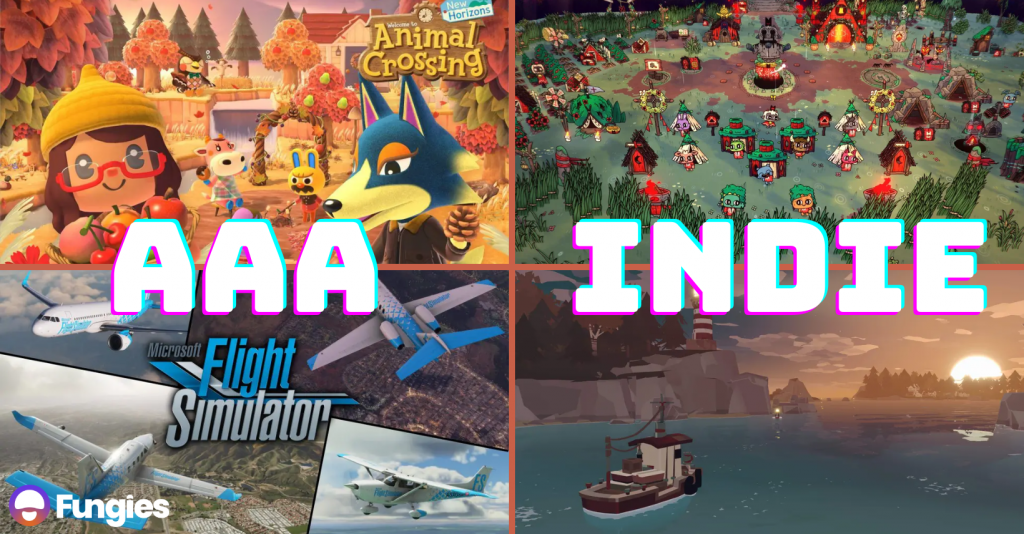
When we delve into the realm of video games, we’re often bombarded with titles from well-established gaming companies. These large entities, with their considerable budgets and vast teams, tend to dominate the headlines. But there’s another side to gaming that’s equally compelling, yet less flashy: indie gaming.
The Essence of Indie
So, what exactly is indie gaming? At its core, “indie” is short for “independent.” Indie games are typically developed by individuals or small teams without the financial backing of a large publisher. This independence means that the creators have full control over their game, from the initial concept to the final product. They are free to experiment, innovate, and often take risks that larger companies might shy away from.
Passion for Gaming
It’s not about the size of the team or the budget, but about the autonomy in decision-making and creative control. Many times, indie developers are driven by a passion for gaming and a desire to tell a story or present a unique gameplay experience that they believe needs to exist.
Indie Gaming vs. Mainstream: Key Differences
The Process
The most significant difference between indie games and their mainstream counterparts lies in their production and decision-making processes. Mainstream games often involve large teams, multi-layered approval processes, and are generally guided by commercial objectives. In contrast, indie games can be more fluid in their development. The indie developer might change the game’s direction based on personal intuition, feedback from early players, or simply a spontaneous burst of inspiration.
Funding
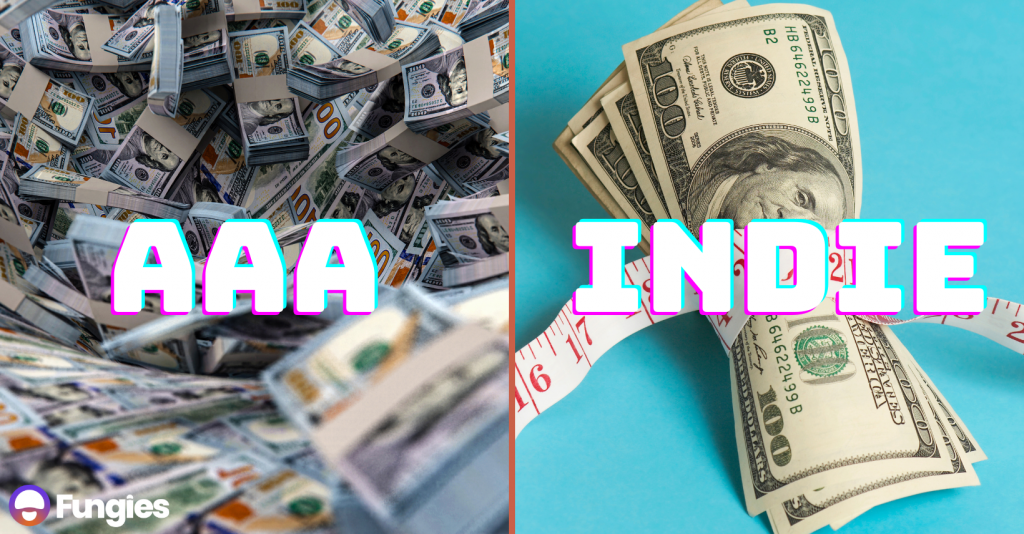
Another distinction is the funding model. While mainstream games have a secured budget from publishers, indie developers often rely on personal funds, crowdfunding platforms, or sales from previous games. This tight budget scenario, ironically, often fuels innovation. Constraints can lead to creative solutions, pushing indie developers to think outside the box and come up with unique game mechanics or narratives that stand out.
Digging Deep: What Defines an Indie Developer?
The world of gaming is vast, with myriad developers creating a plethora of games that range from blockbuster hits to obscure gems. But amidst this diverse landscape, indie developers hold a unique position. So, what sets them apart?
Small Teams, Big Dreams
First and foremost, indie developers often work in much smaller teams compared to mainstream gaming studios. It’s not uncommon for an indie game to be the product of a single developer wearing multiple hats – from game design to programming to art. This compact team size, sometimes even a team of one, allows for a more direct and personal touch to the game.
Budgeting, Funding, and Bootstrapping
Finances are another defining factor. Indie developers usually don’t have the luxury of a hefty budget. They might self-fund their projects, turn to crowdfunding platforms, or seek grants and competitions for financial support. This financial constraint often means they operate on tight budgets, making every penny count. While this can be challenging, it also fosters a culture of resourcefulness and resilience.
Passion Over Profit

What truly defines an indie developer, beyond team size and budget, is their motivation. While profitability is essential for sustainability, many indie developers prioritize their passion for game creation. Their projects are often deeply personal, stemming from a story they want to tell or a unique gameplay mechanic they want to explore. The freedom from external pressures allows them to take creative risks, experiment with novel ideas, and craft games that might not fit the mold of mainstream titles.
Flexibility and Adaptability
Without the bureaucratic layers that come with big studios, indie developers can be more agile. They can quickly adapt to feedback, make changes to their games in real-time, and pivot their direction if they feel it benefits the project.
Evolution Over the Years: Major Milestones
The indie gaming scene has witnessed a remarkable transformation since its inception. With each passing year, significant milestones have shaped its trajectory, bringing it closer to the influential position it holds in today’s gaming landscape.
The Rise of Digital Distribution Platforms

One of the first major shifts in the indie gaming arena was the emergence of digital distribution platforms. Earlier, indie developers faced significant challenges in getting their games into the hands of players. But with platforms like Steam, itch.io, and later the Epic Games Store, indie developers found a direct channel to reach gamers globally.
Festivals and Awards: Giving Indie Developers Their Due
Recognition for indie developers took a leap forward with the introduction of dedicated game festivals and awards. Events like the Independent Games Festival (IGF) became essential landmarks, showcasing the best of indie gaming to audiences worldwide. These festivals and awards brought validation, helping indie games secure their rightful place in the industry.
Popular Indie Titles Gaining Mainstream Success
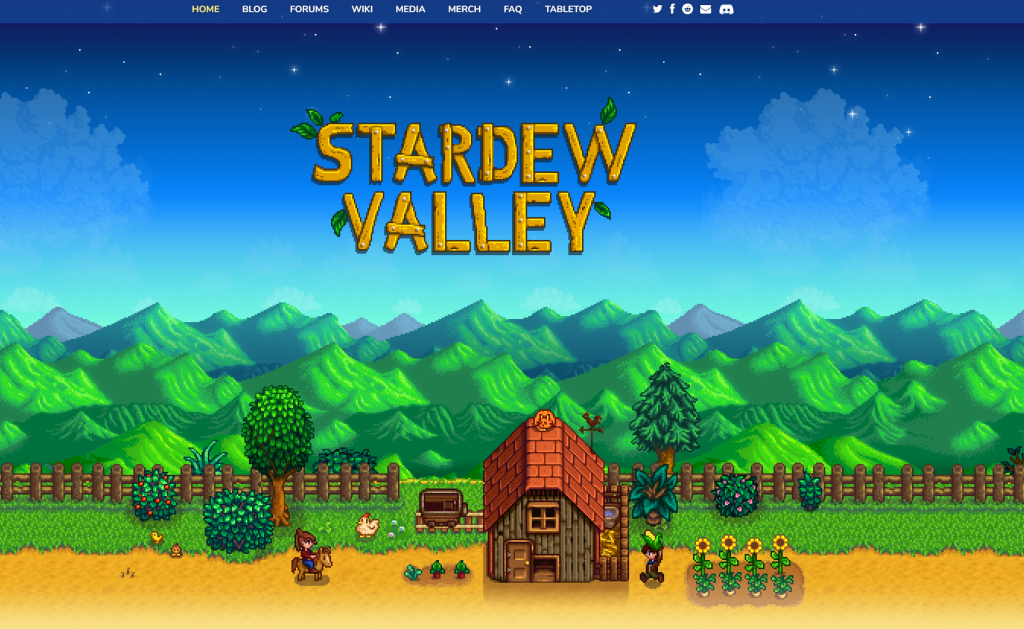
Over the years, several indie games began to achieve mainstream success. Titles like “Minecraft,” “Stardew Valley,” and “Undertale” not only garnered attention within the indie community but also resonated with larger audiences, rivaling and even surpassing the popularity of some AAA titles. Their success stories inspired countless other developers, signaling that indie games could stand shoulder to shoulder with big-budget productions.
The Indie Impact on Game Storefronts
Game storefronts, traditionally reserved for major titles and big-name developers, have undergone significant changes due to the influx and influence of indie games.
Increased Diversity of Game Offerings
Before the indie boom, game storefronts mostly showcased a curated list of AAA titles, with big-budget games taking up prime real estate. With the rise of indie developers, the breadth and depth of games available expanded. This means that players now have access to a broader spectrum of game genres and styles, many of which might have been overlooked in a purely mainstream-dominated marketplace.
A Market Hungry for Unique Experiences
The indie influence underscored an important trend: players are hungry for unique gaming experiences. As indie titles began to find their audience and achieve success, storefronts recognized the value in showcasing these games. Features, recommendations, and spotlight sections began to highlight indie titles that resonated with players, offering a balance between the known blockbuster titles and the innovative indie gems.
Simplifying Game Launches with No-Code Storefronts
The tech landscape’s evolution, particularly the rise of no-code platforms, further eased the path for indie developers. No-code storefronts allowed indie developers to launch and promote their games without the need for extensive technical knowledge.
Power to the Developers: Running Your Own Private Servers
Alongside the rise of indie gaming, we also witnessed a trend where developers sought more control over their game distribution. Private servers became a feasible option, allowing developers to host their games, control the gaming environment, and directly manage player interactions. This shift meant indie developers could offer exclusive content, beta tests, or early access directly to their dedicated player base, fostering a closer community connection.
Community and Indie Gaming: A Symbiotic Relationship
The bond between indie gaming and its community is both profound and instrumental. This relationship has shaped the growth, trajectory, and essence of indie games, and, in return, indie games have given communities novel ways to engage, participate, and express themselves.
The Role of Fans, Streamers, and Early Adopters
The early success and visibility of many indie games can be attributed to dedicated fans, influential streamers, and early adopters who championed these titles. By sharing, streaming, and discussing indie games on platforms like Twitch, YouTube, and gaming forums, these enthusiasts amplified the reach of many indie games. Their endorsement often served as a more authentic form of promotion than traditional advertising, leading to organic growth and genuine interest.

Building a Loyal Player Base from Scratch
For indie developers, the challenge often lies in attracting an audience without the marketing firepower of bigger studios. Communities play a pivotal role here. By actively participating in beta testing, providing feedback, and being vocal supporters, the community helps indie developers refine their games and build a loyal player base. This grassroots level of engagement often results in a deep-rooted fan base that’s invested in the game’s success.
Direct Communication Channels

Unlike larger game studios, which might operate with several layers of management and public relations teams, indie developers often directly communicate with their community. Platforms like Discord, Reddit, or developer blogs serve as hubs where developers can share updates, gather feedback, or just engage in casual chats with players. This direct line of communication fosters trust and strengthens the bond between developer and player.
Critiques and Conversations: Navigating the Indie Backlash
While the indie gaming movement has garnered significant admiration and support, it hasn’t been without its share of criticisms and backlash. This is a natural outcome given the rapid growth and spotlight on indie titles.
Addressing the Criticisms: Are Indie Games Overhyped?
One of the common critiques directed at indie games is the perception of them being overhyped. With countless indie titles releasing and many receiving attention from media and influencers, there’s a sentiment that not all these games live up to their heightened expectations. While some indie games undoubtedly receive well-deserved praise, others might find favor due to novelty rather than depth or quality, leading to mixed reviews from players.
The Fine Balance: Artistic Freedom vs. Audience Expectations
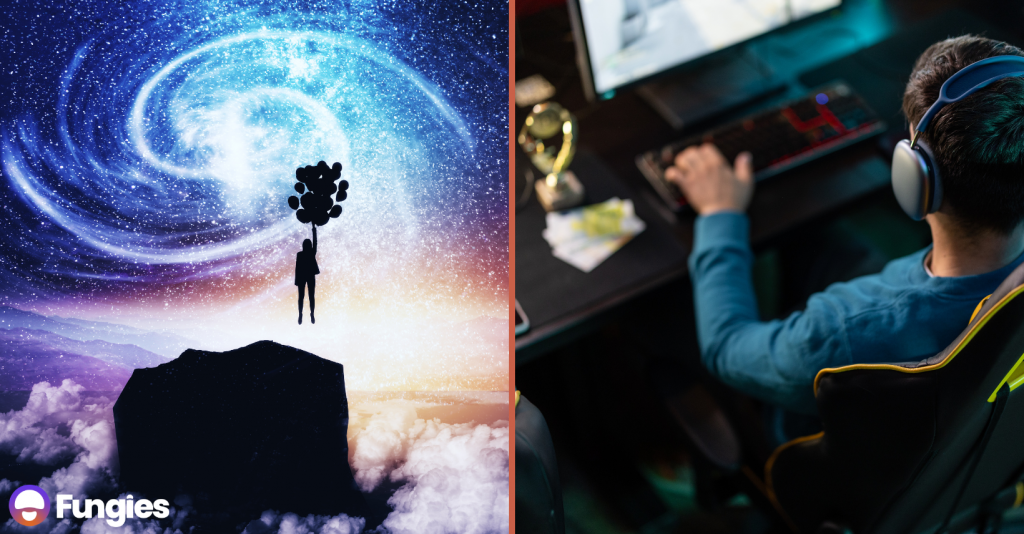
Indie developers often lean into their creative visions, producing games that might not conform to traditional norms or genres. While this artistic freedom is a hallmark of indie gaming, it also brings challenges. Players might approach an indie title with specific expectations based on its promotion, only to find a different experience altogether. This mismatch can lead to critiques about the game’s direction, playability, or narrative choices.
Quality Control and Technical Challenges
Another critique that indie games sometimes face revolves around technical polish. Without the vast resources of big studios, indie developers might release games with bugs or technical issues. While many players are understanding, seeing the passion and constraints behind indie productions, others express frustration, especially when these issues hamper gameplay or immersion.
The Role of Constructive Feedback
Despite the critiques, it’s essential to recognize that much of the feedback, even if negative, stems from a place of passion. Players critique because they care about the gaming experience. For indie developers, parsing through feedback, distinguishing between constructive criticism and mere negativity, and engaging in open dialogues with the community can help navigate these challenges.
Ensuring Authenticity in Promotion
A way to preempt some of the backlash is for indie developers to ensure authenticity in their game’s promotion. By setting realistic expectations and being transparent about the game’s scope, style, and intent, developers can mitigate potential misunderstandings or disappointments.
The Legacy and Promise of Indie Games

Celebrating the Indie Spirit
The indie spirit is about resilience, innovation, and passion. It’s a celebration of creativity and the courage to think differently.
How Indie Developers Will Continue to Shape the Gaming World
The journey of indie gaming is far from over. As technology evolves and new narratives emerge, indie developers will remain at the helm, steering the gaming industry into uncharted territories.




